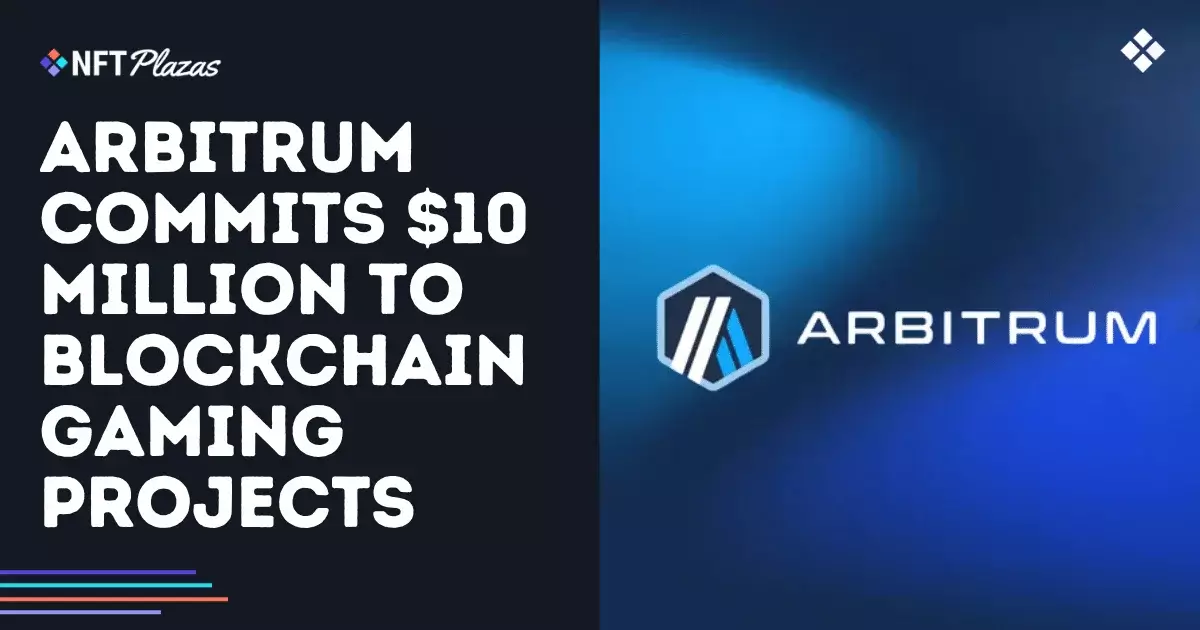As blockchain technology continues to evolve, its integration into the gaming world has sparked both excitement and skepticism. The recent announcement that Arbitrum has launched a $10 million investment initiative, *Arbitrum Gaming Ventures*, signifies a bold move within this arena. This allocation is part of a larger $200 million ecosystem development program funded by the Arbitrum DAO, demonstrating a concerted effort to cultivate a sustainable gaming ecosystem. However, while the investment is indeed promising, the underlying market conditions present numerous challenges that cannot be ignored.
Capital Redistribution in a Competitive Landscape
Arbitrum’s strategy pivots away from traditional grant-based models and embraces direct investments targeted at early-stage projects, reflecting an adaptive approach in a rapidly changing landscape. While this is a commendable step forward, it brings with it the weighty responsibility of ensuring that these funds are allocated wisely. With competitors like Immutable and Ronin carving their own niches in blockchain gaming, Arbitrum must not only attract new developers but also retain existing ones. The question remains: will the selected projects truly elevate the ecosystem, or will they simply serve as floundering footnotes in a burgeoning industry?
The five projects earmarked for funding—Wildcard, Hyve Labs, T-Rex, Xai, and Proof of Play—represent a range of innovative solutions from multiplayer games to tools that facilitate cross-platform interactions. Nevertheless, the complexity of executing these projects adequately is daunting. The gaming industry is notoriously unforgiving, and if history has taught us anything, it’s that many high-profile attempts at innovation have fallen flat, often clouded by overhype and underperformance.
Championing Founders or Challenging Challenges?
Rick Johanson, a key figure at Arbitrum Gaming Ventures, articulates a commitment to backing proven founders, indicating a desire to build high-quality, long-term gaming experiences. This is undoubtedly an admirable aim, but it prompts scrutiny regarding the criteria used to evaluate these “proven” founders. Are they truly equipped to deliver on promises made during the pitch phase? Is there a robust vetting process that examines the track record of these creators? Without rigorous assessment, the initiative risks funding ventures that may be more attractive on paper than they are in practice.
Additionally, while the focus on infrastructure-heavy projects is astute, it begs the question about the balance of resources allocated to content creation versus technical support. Providing the tools is just half the battle; ultimately, engagement and enjoyment are what will retain users.
The Broader Implications for the Gaming Ecosystem
Arbitrum’s initiative comes at a time when many web3-related platforms are grappling with retention rates and user engagement. High ambitions can lead to high expectations, but repeated failures in sustaining interest can tarnish the reputation of blockchain technologies as a viable solution in the gaming world. Although Arbitrum is aiming for quality by investing directly rather than dispersing grants indiscriminately, it has to navigate the fine line between ambition and overreach.
Moreover, while grants are being offered to newer entrants through the Arbitrum Foundation, this dual-track strategy may create an imbalance in priorities. A unified, singular approach could streamline the ecosystem’s growth, ensuring that no project feels neglected due to the stark differences in funding mechanisms.
Looking Ahead: Sustainability and Real-World Applications
As the gaming industry evolves, it is critical for blockchain projects to demonstrate real-world applications rather than existing in a theoretical vacuum. The success of Arbitrum Gaming Ventures will largely depend on how effectively these funded projects can engage users and create sustainable systems that resonate with both gamers and developers alike. It remains to be seen whether Arbitrum can stand out amid a sea of competitors and navigate the choppy waters of blockchain technology.
The investment from Arbitrum is not just about facilitating game development; it reflects a vision for a future where blockchain serves to enhance user experiences and establish lasting engagement. However, realizing this vision will require not just funding but an unwavering commitment to quality and sustainability, providing a blueprint for the burgeoning intersection of gaming and blockchain. Whether Arbitrum can lead by example is a question that only time will tell.

